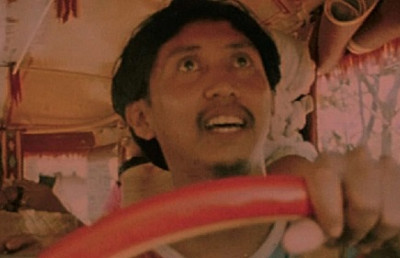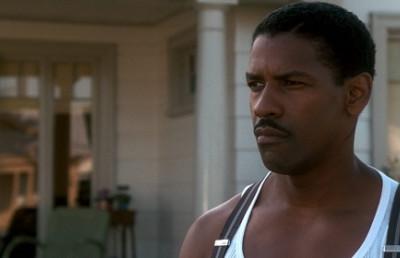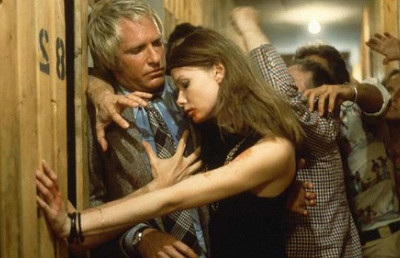Metropolis or: the insidious nature of Fascism

“Don’t yet rejoice in his defeat, you men!
Although the world stood up and stopped the bastard
The bitch that bore him is in heat again.”
-Bertolt Brecht
Fritz Lang, the German monocle-wearing director was venerated by both his contemporaries and future filmmakers. King Vidor, a contemporary of his, after having watched Metropolis (Fritz Lang, 1927), found the building blocks to make his own city film, The Crowd (King Vidor, 1928). Even radical auteurs, like Godard, prayed at his altar (even making Lang a character in his film Contempt). Lang, like Eisenstein, Griffith, Vigo, Gance, and Chaplin, was one of many responsible for the creation of the language and the subsequent grammar of the moving picture. He transitioned between silent and sound film seamlessly. Some of his works are paramount in the history of the medium. His psychologically entrenched M (Fritz Lang, 1931), about a group of criminals that band together to stop a child murderer, is still considered one of the first and best serial killer movies ever made. You can see his footprints in most films since, from the severe light and shadow play in Citizen Kane (Orson Welles, 1941), to the neo-noir fatalism of Blade Runner (Ridley Scott, 1982). In other words, the man has little to be reproached for.

So, why is there a strong attack or innuendoes of Fascism, against one of his major works, Metropolis? To understand the underlying fascism in Metropolis we have to go look at not only who directed it, but the writer, Thea Von Harbou, Lang’s second wife. Von Harbou was a minor novelist in the Weimar era. In a rich German literary world, filled with luminaries like Goethe, Kafka, Doblin, Mann, and Brecht, her writing did not even approximate a footprint in history. After writing Metropolis, first as a book and later as a script, she would become a card carrying Nazi with all the malice and entitlement that it contained. Now, I am not prone to analyzing works of art in this trite a-priori manner, and I think there can be, and is, a separation between both the artist and the work they produce. Wagner was a virulent anti-semite, but as Slovenian philosopher Slavoj Zizek jokingly points out, the Wagnerian heroes of some of his operas like The Flying Dutchman or Parsifal are archetypes of the wandering Jew. Ezra Pound was famously pro-Mussolini, going so far as being an active participant in the movement and a Fascist spokesman of sorts, but, I cannot say with all certainty that I see an underlying fascist current in The Cantos (then again Canto XLV, might not be the best example of that). The case of Fraulein Harbou, I would claim, is slightly different in matters of content and function, and as such, of note.
A second element of note, is an infamous meeting between Fritz Lang and Joseph Goebbels, Reci Minister of Propoganda, in the early thirties. Lang was invited to meet with Goebbels to discuss the state of German filmmaking. Lang of course was nervous about the meeting, but what he found was the utmost praise and admiration from the foul propagandist. Goebbels claimed that movies like Metropolis were to be the new German film. Sure, American politician Paul Ryan likes Rage Against the Machine, that doesn’t imply in the slightest that the band serves some conservative ideal, but there is a clear difference between Ryan and the man in charge of Propaganda in Nazi Germany. Goebbels saw Metropolis as a tool for the shaping of German culture in both conscious and unconscious manner.
Fascism sui generis
In this short piece I will not be able to produce or elucidate all the different cogs and mechanisms that are proper of the fascist structure, nor will I go in depth in its historical narrative and processes. I will simply attempt to create an image of fascism and describe some of its core characteristics in relation to the most problematic elements of the film.
Fascism has always been a conservative revolution, keeping the elements of authority and hierarchy in place. It borrowed some elements from the leftist movement and at the same time compartmentalized those elements in a vertical structure. Former elements of radical syndicalism, Soreleanism, and even anarchism, joined the fascist ranks.
Amadeo Bordiga recognizes this in his Report on Fascism (1922) sent to the Fourth Congress of the Communist International, he writes.
In addition, there were currents of the left bourgeoisie: the Italian radicals, left-wing democrats and republicans whose tradition demanded liberation of Trieste and the Trentino. And thirdly, the intervention movement also embraced some elements of the proletarian movement: revolutionary syndicalists and anarchists. And this grouping also included an individual of particular importance, Mussolini, the leader of the Socialist Party’s left wing and the director of Avanti.
At first, this conservative revolution was anti-capitalist, but soon it was reorganized in a way where the capitalist class had participation and protection within an authoritarian system. Capitalists defended fascists in the Italian countryside and fascists defended capitalists in the German urban sectors. This came as a result of the various failed revolutions in Germany, Italy and other countries around Europe, the concessions made by so-called leftist governments and organizations regarding revolutionary action and agrarian questions, and the Capitalist offensive that followed coupled with the almost absolute annihilation of the more radical leftist elements in their respective societies (the Spartacist in Germany and the Italian Communist Party). Not only did they take these elements from the proletarian movement, but also incorporated the existing authoritarian structures in the system. That coupled with their inherent militarism and the complicity of the bourgeois state, gave them enough power to solidify themselves in their respective countries. This was where the fascist state started developing its elements of corporatism. The capitalist would rather align itself with the fascist, despite its racist characteristics, because the conditions of power, although exacerbated, would remain the same. This transition brought the corporatist element of fascism, instead of recognizing the elements of class struggle, corporatism attempted to eliminate such notions by creating a nominal mediatory element between classes and as such eliminate the conditions of class struggle in itself.
Metropolis
The movie begins with vistas of a shining city, filled with movement, and progress, the city will be set up as a symbolic element between the haves and the have nots. High up in the skyscrapers live the elite, down in the gutter, the workers, in symbolism so on the nose that Bong Joon Ho’s Snowpiercer would blush. We are shown the workers at the beginning of their shift, moving in a soulless mechanical fashion, all dressed the same, one after the other in an organized line.
Up in the sky, the elites are living the dream, they frolic carelessly in their massive gardens and parks. The master of the city is Jon Fredersen, gazing like a hawk from above. Freder, his son, is the hero of our story.
One day while doing the aforementioned frolicking in the gardens, Freder encounters the virginal Maria (again, Fraulein Harbou did not keep a light hand with her symbolism), she is from the lower caste and is showing some children of the worker’s class how the other half lives. Freder is immediately smitten by her. He follows her to the entrails of the city, where he sees first-hand the toil of the workers. They work at a giant machine hall and an accident occurs, in his trauma Freder hallucinates the machine as a temple of Moloch, where workers are thrown in as sacrifice.
In shock, Freder visits his father, who is always cold and distant, and tells him about the accident and the condition of the workers. He gets angry, not because of the accident, but merely because he wasn’t informed and chastises his secretary, Josaphat. At that moment, Grot, one of the workers, comes to Fredersen’s office to show him some maps that were found on the bodies of the dead laborers. Fredersen fires Josaphat for his continued incompetence.
Freder has been touched by the suffering of the unwashed masses and wishes to return to the entrails of the city, with the help of the newly unemployed Josaphat. When he arrives there he trades places with a worker named Georgy. Fredersen goes to Rotwang, an archetypal mad scientist, to show him the maps. Rotwang has been working on something as well, an automaton that resembles Fredersen’s old flame and mother of Freder who died during childbirth. Little does Fredersen know that Rotwang himself is carrying an old torch for the missus and resents Fredersen for taking her away from him, and has plans of his own to take over the city with his automaton.
Fredersen and Rotwang realize that the maps are of the intricate set of catacombs under the city and go there to investigate. They find the catacombs and a hollowed cave where Maria is evangelizing to the workers about her philosophy, “The Mediator Between the Head and the Hands Must Be the Heart” ; this motto is repeated throughout the film. Freder, who is also there, sees himself as this mediator and jumps to the occasion while professing his love to Maria.
Fredersen orders Rotwang to kidnap the real Maria and transfer her likeness to the automaton, in order to quell the dissent amongst workers. Rotwang will use this opportunity to usurp power from Fredersen. The kidnapping goes as planned and the automaton infiltrates the workers as Maria.
Freder witnesses Fredersen and the fake Maria in a deep embrace and he goes into hallucinatory delirium. While all this is happening, fake Maria is trying to incite the workers to revolt and destroy the heart machine and take over Metropolis. The workers leave their children behind and the underground begins to flood after destroying the machine.
Freder, now sane, with a recently escaped Maria and Josaphat take the children to safety. Grot berates the workers for leaving their children behind and in anger they burn the fake Maria at the stake, revealing the automaton.

Rotwang, in the full grip of madness, sees Maria as his lost love and takes her to the top of a chapel, where Freder and Rotwang fight and the latter falls to his death. At the steps of the chapel Fredersen, Freder, the workers, and Maria meet. Maria holds the hand of Grot, Fredersen, and Freder together and exclaims her motto once more.
Automaton as Parasite
In Nazi Germany there were several anti-semitic propaganda films, the most notable being The Eternal Jew (Fritz Hippler, 1940). Most of them would tout the generic antisemitic vile –-they are dirty, they are manipulative, they are hyper-sexual-– but they would also claim an attack on the bourgeois Jew, or the assimilated Jew, the one you don’t recognize, that has infiltrated your quotidian life. This idea that the parasite has introduced itself in the body politik, that the other is almost unrecognizable and that vigilance is always needed can be perceived with the symbol of the automaton in Metropolis. The “other” is already here, as an agent of modernity, or Bolshevism, or the international Jewish banking plot, to incite terror and rebellion amongst the masses and it is the responsibility of a good German to recognize it. They look like us, they act like us, but they are not us, a foreign entity meant for the destruction of the system as a whole. This inherent otherization, the idea that something (or someone) has been inserted into political life that is non-organic and non-national is central to fascist ideology. I would be remiss not to make note of the fact that the name of the scientist is Rotwang, and “rot” translates to red in German…although an interesting fact, I might be grasping at straws.
Revolution as Madness
Also of note are the words of revolution by the fake Maria, painted as deranged and delusional. It is difficult not to see this in relation to events that happened years before in Germany and to not compare them to a figure like Rosa Luxemburg. These speeches of revolution are portrayed in the film as deranged, Luxemburg, who participated in the Spartacist uprising and was subsequently assassinated by the Freikorps, was a Polish Jew, an “external agent”. To speak of revolution in the world of Metropolis is to speak of madness and destruction.
Revolution is presented in the film as an external force, meant to mislead the working classes. It does not occur as a result of material necessity nor organic manifestations of despair, it could only occur as the vehicle of a foreign force. Not only that, it is shown as a self-defeating, self-destructive affair, not because of possible defeat by the existing conditions of power, but because of the very nature of those actions.
Corporatist Messiah
The motto of “The Mediator Between the Head and the Hands Must Be the Heart” that is brought up again and again in the film is also a clear determinant of the fascist nature of its contents. Although fascism borrowed elements of the socialist struggle within the fray of their movement, their plan was never to give real agency to such despair. Part of the fascist/corporatist model fancies itself into eliminating the elements of class struggle through the mediatory agent of the state, all in service of the nation. Mussolini describes it best in his Doctrines of Fascism (1932).
Fascism recognizes the real needs which gave rise to socialism and trade unionism, giving them due weight in the guild or corporative system in which divergent interests are coordinated and harmonized in the unity of the State.
The condition of the state as a mediator of class disparity is proper to the elements of fascism in itself. Class struggle is rendered moot, as long as a vehicle of mediation is present. The “heart” in Metropolis is meant to serve this purpose. Although there is no “state” present in the clunky symbolism, the mediation between the capitalist class and the working class is undeniably apparent. It recognizes the elements of oppression but it gives them no real agency. This is the role of Freder and something that Maria reminds us from the beginning, although the workers are impatient into channeling their revolutionary fervor into action, Maria reminds them that they need an agent of change, a messiah that would alleviate the conditions of struggle, but always conscious for the need of the “head.”
Expression without agency
Throughout the film, we see images of utter misery and poverty, of mechanized laborers, of industrial death, of injustice. This, in itself, is not negative, what the film chooses to do with said images is what is troubling. The problem is not one of exploitation, according to the film, it is one of language. This language is only known by “the heart.” Yes, the workers have their go at violence, but the last scene of the film is reflective of the stationary conditions of such power dynamics. It is not class struggle that is needed, but class collaboration or, perhaps, class subservience. The images of suffering have given avenue to the understanding of the structures of oppression, but the ending of the film reinforces the corpus of the given structures. The workers have been given expression, but no real agency. Walter Benjamin, writing on the subject of Fascist art against Communist art in his The Work of Art in the Age of Mechanical Reproduction (1935) states.
Fascism attempts to organize the newly created proletarian masses without affecting the property structure which the masses strive to eliminate. Fascism sees its salvation in giving these masses not their right, but instead a chance to express themselves. The masses have a right to change property relations; Fascism seeks to give them an expression while preserving property (p.19).
This preservation of property and of power relations and structures are ultimately the message of the film. Although there is some recognition in creating a slight reorganization of the systems of production it is solely done as a recognition of the inability of Capitalism to function without a planning entity. Gramsci will elaborate on this with his concept of Passive Revolution in his Prison Notebooks:
…there is a passive revolution involved in the fact that —through the legislative intervention of the State and by means of the corporative organization— relatively far-reaching modifications are being introduced into the country’s economic structure in order to accentuate the ‘plan of production’ element; in other words, that socialization and cooperation in the sphere of production are being increased, without however touching (or at least not going beyond the regulation and control of) individual and group appropriation (p. 119-120).
In other words, get angry, but get back to work.

What is to be done?
Why is this criticism relevant or important in today’s day and age? Why am I dissecting a film that is almost a hundred years old? How does that affect our modern cultural landscape? Culture and Ideology are strictly linked and the existing power structures assert themselves through the medium of culture as a vehicle to ideology. Ideology and culture reinforce the static notions of power and feed conditions of conformity. Others have made this claim with far greater eloquence, Gramsci, Marcuse, Althusser, Debord, Žizek to name a few. Perhaps these days, Fascism is not the vehicle that is being used in culture, but, the neo-liberal order certainly is. Both Fascism and Neo-Liberalism are subservient vehicles and compadres to Capitalism, the latter perhaps a slightly gentler face of it as French-American Professor Gabriel Rockill has pointed out time and time again.
We cannot forget the role that Hollywood has played in reinforcing these power structures. The infamous showing of The Birth of a Nation (D.W. Griffith, 1915) in the White House, the corporate attacks by the major studios against the gubernatorial run of Upton Sinclair in California in 1934, the witch hunt of HUAC against writers and performers with the approval and help of the likes of Louis B. Mayer and Walt Disney. If they can convince Americans that King Kong is ten-stories tall or that Charlton Heston is Mexican, they certainly can maintain the narrative of oppression as something positive.
In The Dark Knight Rises (Christopher Nolan, 2012) the speech that Bane gives after taking over the city in front of Blackgate prison is not that different from the revolutionary madness of the fake Maria.
In Black Panther (Ryan Coogler, 2018) the militant radical is seen as the enemy, while one of the good guys is a white CIA operative in Africa. I can suspend my belief and buy the notion that a mystical plant can grant you superhuman powers, but the CIA working for the determination of an African nation? That’s a bridge too far.
In The Falcon and the Winter Soldier (Malcolm Spellman, 2021), refugees are seen as terrorist agents and by episode three, they are already blowing up some camp.
Sure, Hollywood attempts to humanize these villains, so long that at the end of the day things remain the same. These elements of subservience to power, to militarism, to political experts are echoed in the real world: the mainstream over-dependance on CIA, and FBI former operatives, parading every twenty minutes or so on MSNBC and CNN. We too are complicit for our lack of skepticism to those who historically have served the purpose of the powerful. The ultra-focus on Identitarian issues over transformational policy is a clear example of what Walter Benjamin inferred. By giving space of expression to the mere Identitarian cause, the Capitalist power structures remain the same, although it is a place of expression, any notion of transformational policy is silenced. Opportunistic campaigns like Nike’s or Amazon’s in relation to causes like BLM are further proof of the superficial spaces created for expression, without engaging in transformation. The act becomes perfunctory and more superficial than Kabuki, by obscuring the existing forces of domination, coercion and destruction instead of shining a light unto them. The fascist model is maintained under a new guise, but the bones are there, alive, waiting to subvert any true transformational art, any revolutionary art. Perhaps it is time to create a counter hegemony of images and symbols to combat the always insidious and serpentine manipulations of the propagandistic arm of corporate America and pose some resistance against the apparatchiks of the P.R firms and the studio approved, overwritten, pandering scripts that are so present in our culture. To borrow from Breton, Rivera (and most likely Trotsky)
Our aims:
The independence of art — for the revolution.
The revolution — for the complete liberation of art!
Bibliogrgaphy
Benjamin, W., Zohn, H., & Arendt, H. (1969) Illuminations, edited by Hannah Arendt, translated by Harry Zohn, from the 1935 essay, New York: Schocken Books https://web.mit.edu/allanmc/www/benjamin.pdf
Bordiga, Amadeo. “Report on Fascism.” Report on Fascism by Amadeo Bordiga 1922, n.d.
https://www.marxists.org/archive/bordiga/works/1922/bordiga02.htm.
Brecht, B., & Tabori, G. (2017). The resistible rise of Arturo Ui. Bloomsbury Methuen Drama, an imprint of Bloomsbury Publishing Plc. http://www.socialiststories.com/en/writers/Brecht-Bertolt/The-Resistible-Rise-of-Arturo-Ui-Bertolt-Brecht.pdf
Breton, A., & Rivera, D. (n.d.). Manifesto for an independent revolutionary art. marxist.org. Retrieved from https://www.marxists.org/subject/art/lit_crit/works/rivera/manifesto.htm
Down with ideology? Talk with Slavoj Žižek | Sternstunde Philosophie | SRF kultur (2019, January 18). YouTube. Retrieved from https://www.youtube.com/watch?v=Zm5tpQp6sT4
Gramsci, A., Hoare, Q., & Nowell-Smith, G. (1971). Selections from the prison notebooks of Antonio Gramsci. International Publishers.
Lang, F. (2011, October 13). Fritz Lang interview. YouTube. Retrieved from https://www.youtube.com/watch?v=wk22GME79S0&t=216s
Mussolini, B. (1932). Mussolini’s doctrine of Fascism. Retrieved from https://pages.uoregon.edu/kimball/Mussolini.Doctrine.htm
Pound, E. (1936.). Canto XLV by Ezra Pound. Poetry Foundation. Retrieved from https://www.poetryfoundation.org/poems/54319/canto-xlv
Riddell, J. (2012). “Amadeo Bordiga 1922 Report on Fascism.“Toward the United Front: Proceedings of the Fourth congress of the Communist International, 403-423, 1922. Haymarket. https://www.marxists.org/archive/bordiga/works/1922/bordiga02.htm
Rockhill, G. (2020, October 14). Liberalism and fascism: Partners in crime. CounterPunch.org. Retrieved from https://www.counterpunch.org/2020/10/14/liberalism-and-fascism-partners-in-crime/













